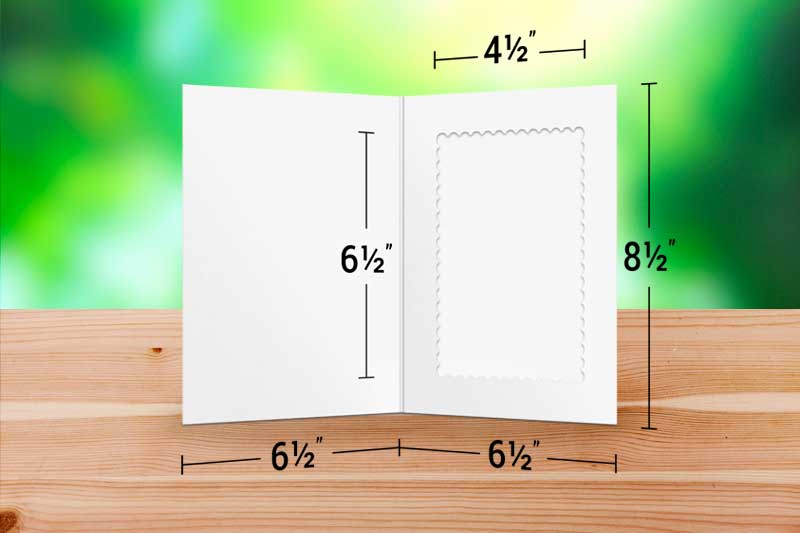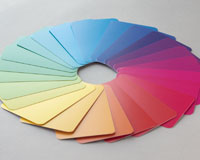for people who design things, then print them
Folder Sizes: A Guide to Standard US Pocket Folder Dimensions
Supported Article
CompanyFolders.com got in touch to see if they could write an article for me on the topic of US folder sizes. I thought that would be a great addition to the site, so here's the article.

When you imagine a folder, what’s the image that comes to mind? Chances are that it’s a fairly standard letter-size piece, the type you probably used in school. But the truth is that folders come in an incredible array of shapes and sizes—many of which are uniquely suited for specific purposes.
When customizing a folder, you should make sure you fully understand how its size is measured, as well as how that size relates to the dimensions and quantity of the materials inside. This helpful guide will empower you with the knowledge you need.
Company Folders provides a wide variety of custom printed marketing collateral; be sure to explore their selection of folder sizes.
Standard Folder Dimensions
Letter Size Folders
A standard letter size folder is 9x12 inches (the most popular dimensions for most folders).

Legal Size Folders
A legal size folder are typically 9x14 inches, but may be slightly larger (9.5x14.5 inches) to ensure that the materials inside have enough room.

Photo Size Folders
Photo folders are made to fit 4x6, 5x7, or 8x10 (depending on the dimensions), and are slightly larger than the photo itself in width and height. For instance, a mini-folder for a small 5x7 photo might be approximately 6.5x8.5 inches.

Pocket Folder Size vs. Paper Size

It’s important to note that a “letter size folder” doesn’t mean that the actual folder is letter size. Rather, it’s slightly larger than a letter size sheet to ensure that it can comfortably hold materials of those dimensions.
Typically, a folder will be between 1 and 1.5 inches larger than the paper inside in terms of width and height. Letter size paper, for instance, is 8.5x11 inches, so a 9x12 folder is appropriate. The same is true of legal size paper (8.5x14) and legal size folders (9.5x14.5, though there may be some variation here).
Closed vs. Open Dimensions

When shopping for folders online and evaluating a product’s dimensions, pay close attention to whether you’re looking at the “closed” or “open” dimensions. An 18x12 folder might sound like an extra-wide, oversized folder—but you may be looking at the dimensions when the piece is fully open. That same folder is most likely a regular 9x12 piece when it’s closed.
Note that it’s not always as simple as dividing or multiplying the folder’s width by two. A tri-panel folder, for instance, might be 9x12 when closed, but nearly 27x12 when open.
In most cases, the “closed” dimensions will be the more important measurement, especially if you plan to store or send the folder in a portfolio, envelope, box, or other form of packaging. It will also give you a general sense of the paper size that will fit into the folder’s pockets.
Pocket Capacity

Knowing a folder’s dimensions won’t tell you how many sheets of paper it can actually hold. That all depends on the thickness of your stock as well as the capacity of the folder’s pockets. Standard pockets have a lower capacity than expansion or box pockets, which are flexible and strong enough to hold a greater number of sheets.
For large quantities of materials, consider choosing a folder with expandable pockets.
Standing Out

When choosing a size for your folder, remember that picking out dimensions that match the size of the paper you plan to put inside isn’t necessarily the only criteria you should take into account. You should also consider how the folder’s size complements or contrasts with other marketing materials.
If you need your folder to stand out in a stack of standard letter size collateral, for instance, you might want to go with something larger so that the recipient is more likely to take notice. People are exposed to dozens of marketing materials each day, so if you want their attention, you’ll need to do something different—and a unique size or shape is an excellent way to do that.
Swatchos

Choose Colours With A Deck Of Cards
A box of cards for choosing colours and making colour schemes.
- 130 Cards
- CMYK Values
- RGB Values
- 900 Colours
- Millions of combinations
£36 / $47 / €43
Brought to you by
Swatchos
Pick Colours With A Deck Of Cards
A box of 130 cards for playing with colour. For digital or print creatives. RGB and CMYK values. Millions of combinations.




